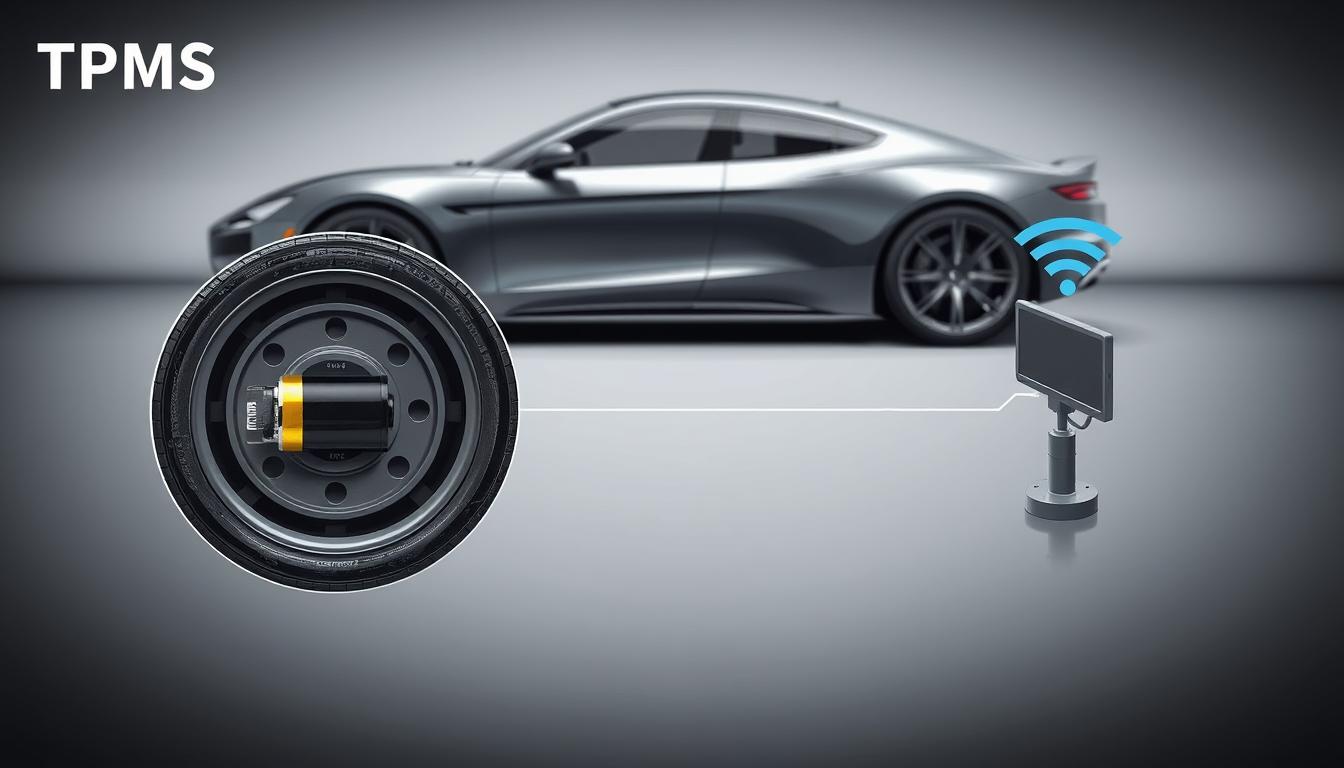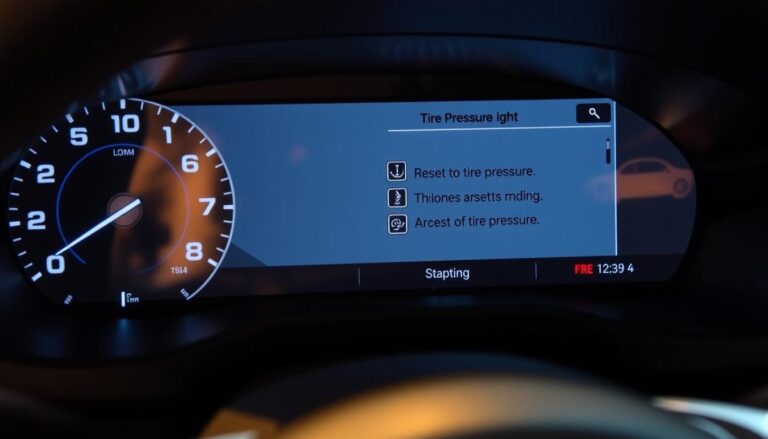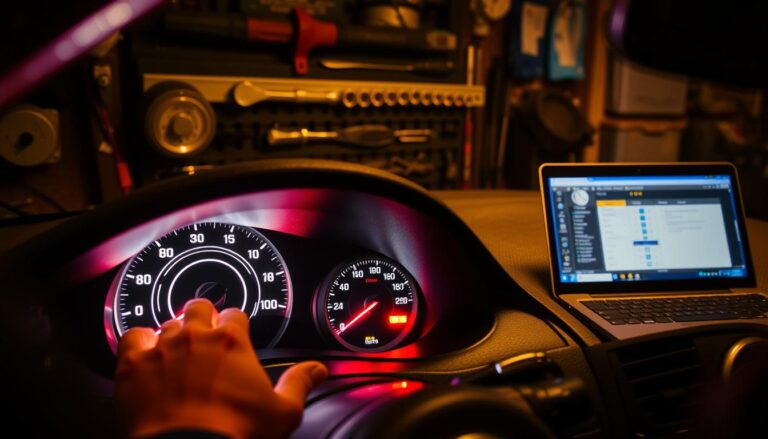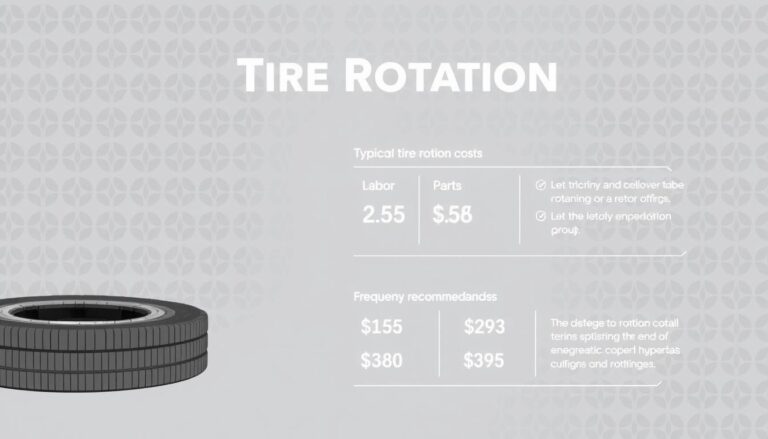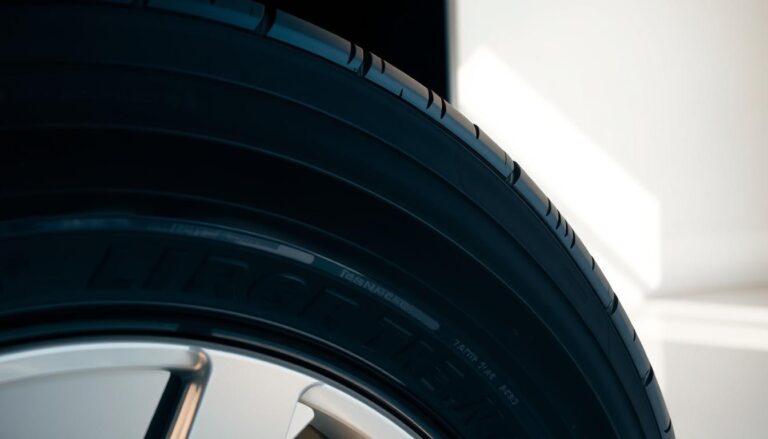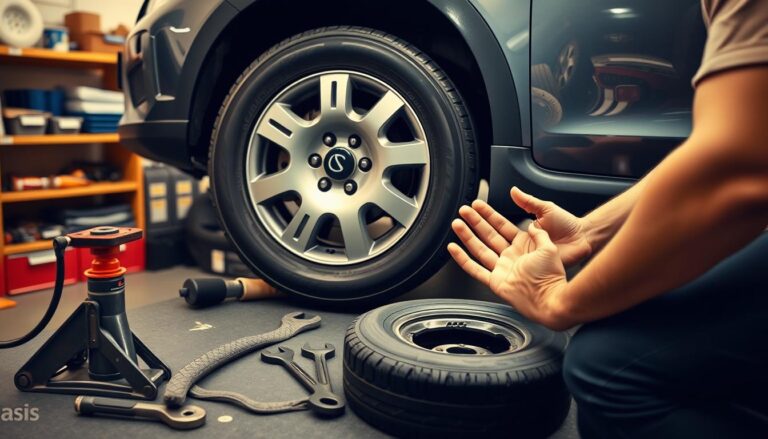Service Tire Monitor System Explained | Quick Guide
Your vehicle’s safety depends on many systems, and the tire pressure monitoring system (TPMS) is key. It alerts drivers about tire pressure issues. This technology helps prevent dangerous tire incidents on the road.
The service tire monitor system is more than a dashboard warning light. It’s a vital safety feature that tracks tire air pressure in real-time. It gives instant feedback about any problems before they get serious. Whether you’re on highways or city streets, your TPMS keeps you safe.
Modern cars with tire pressure monitoring system service give drivers peace of mind. These advanced sensors check tire inflation levels all the time. They send alerts right away if pressure is too low. This helps avoid unexpected blowouts, saves fuel, and makes tires last longer.
Knowing how the service tire monitor system works makes you a better driver. Each TPMS has special sensors inside the wheels. They measure air pressure and temperature constantly. If they find something off, they light up your dashboard, telling you to take action.
For car owners, understanding TPMS is about safety, performance, and keeping your car in good shape. This guide will cover everything you need to know about your tire pressure monitoring system. We’ll go from the basics to advanced troubleshooting.
Understanding TPMS: Your Vehicle’s Tire Safety Guardian
A Tire Pressure Monitoring System (TPMS) is a key safety feature in today’s cars. It keeps tire pressure at the right level. This helps avoid road dangers and boosts your car’s performance.
TPMS is more than just a warning light. It’s a smart system with sensors and electronics. It watches tire pressure in real-time to keep drivers safe.
Basic Components of TPMS Technology
To understand TPMS, you need to know its main parts:
- Tire pressure sensors
- Wireless transmitters
- Central receiving unit
- Dashboard indicator light
Direct vs Indirect TPMS Systems
There are two main types of TPMS technology:
| Direct TPMS | Indirect TPMS |
|---|---|
| Measures actual tire pressure | Uses wheel rotation speed |
| Individual wheel sensors | Relies on ABS wheel sensors |
| More precise readings | Less expensive implementation |
How TPMS Sensors Communicate
TPMS sensors use radiofrequency transmission to send pressure data to the car’s computer. Each sensor has a unique code to avoid signal mix-ups.
These sensors work on frequencies from 315-433 MHz. They send data every few minutes or when pressure changes a lot.
What Does Service Tire Monitor System Mean
The service tire monitor system (TPMS) is a key safety feature in today’s cars. It alerts drivers to possible tire pressure problems. If your car’s TPMS warning shows up, it means you need to check your tires right away.
Knowing what the TPMS service warning means is important. It can happen for a few reasons:
- Tire pressure sensor battery failure
- Sensor communication disruption
- System calibration problems
- Potential sensor damage or malfunction
Don’t ignore the TPMS warning. It could mean your tire sensors are having trouble. Checking them quickly can help avoid accidents and keep your car running well.
Fixing the TPMS usually needs a pro to figure out the problem. Mechanics use special tools to check the sensors and find the issue. They then suggest the best fix or replacement.
Here’s what to do if you see a TPMS warning:
- Check your tire pressure by hand
- Look for any tire damage
- Get a professional to check your car
- Replace any bad sensors
Fixing the TPMS warning fast keeps your car safe. It also stops any long-term damage to your tires or sensors.
Common TPMS Warning Signs and Signals
Knowing how important TPM system service is key for your car’s safety and performance. Tire pressure monitoring systems (TPMS) send out vital alerts. Drivers must quickly notice and fix these warnings.
Today’s cars with TPMS have advanced sensors to check tire pressure. These sensors alert drivers to any problems. It’s important to pay close attention to these warning signs when servicing your TPMS.
Dashboard Warning Light Patterns
TPMS dashboard lights show different levels of urgency:
- Steady Yellow Light: Shows low tire pressure in one or more tires
- Flashing Yellow Light: Means there might be a sensor problem
- Red Blinking Light: Tells you to take action right away
System Error Messages Explained
Each car model shows its own error messages for tire pressure. These messages can mean:
- Changes in tire pressure
- A weak sensor battery
- A possible system disconnect
Sensor Malfunction Indicators
Spotting sensor problems early helps avoid tire safety risks. Look out for:
- Unstable pressure readings
- Flashing warning lights
- A failed sensor
If you keep getting TPMS warnings, get a professional check. This ensures your car stays safe and runs well.
The Essential Role of TPMS in Vehicle Safety
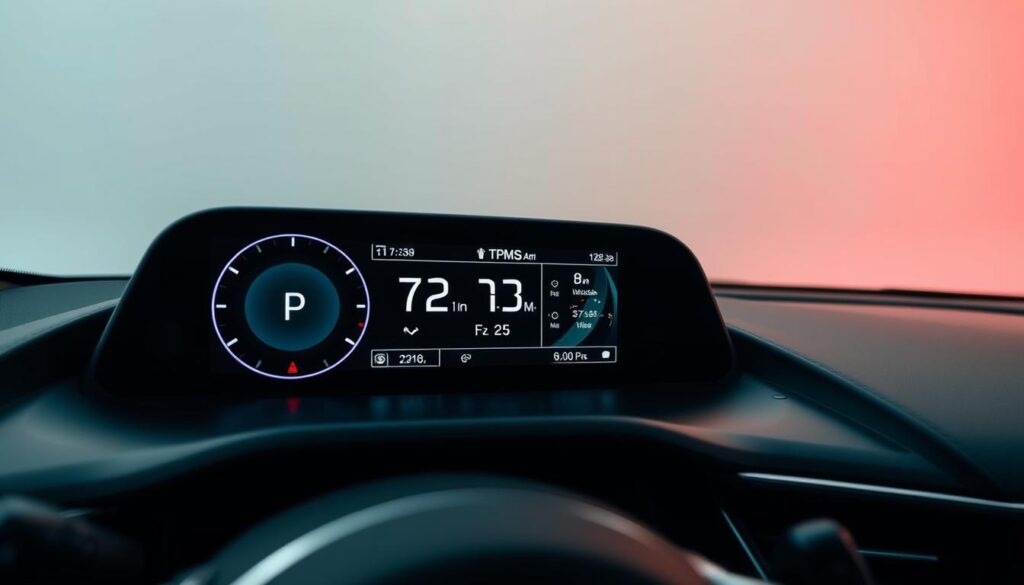
Tire pressure monitoring systems (TPMS) are key to keeping drivers safe. They are vital for the safety of everyone on the road. They also make sure your car runs well and feels good to drive.
TPMS does more than just check tire pressure. It gives drivers real-time updates on their tires. This helps avoid accidents and saves money on repairs.
- Prevents tire blowouts by detecting low pressure
- Improves fuel efficiency
- Enhances vehicle handling and stability
- Reduces risk of unexpected tire failures
Statistics show how important TPMS is. The National Highway Traffic Safety Administration says that right tire pressure can cut down on accidents by 50%. TPMS warns drivers of tire problems before they become big issues.
Using TPMS for tire care helps in many ways. It lets drivers catch leaks early, keep tires in top shape, and make them last longer. It also keeps your car handling smoothly.
- Detect slow leaks early
- Optimize tire performance
- Extend tire lifespan
- Maintain optimal vehicle handling
TPMS turns tire care into a proactive effort. It’s a big step forward in keeping cars safe. It gives drivers confidence and safety on the road.
How TPMS Sensors Function and Detect Pressure
Tire pressure sensor service is key to modern car safety. It uses advanced tech to check tire pressure in real-time. This gives drivers important info about their tires.
Today’s TPMS sensors use cutting-edge tech to track tire pressure accurately. They are small but give quick and precise readings.
Sensor Technology Breakdown
TPMS sensors have a few main parts:
- Pressure-sensitive transducer
- Battery-powered electronic circuit
- Wireless transmission module
- Temperature compensation mechanism
Pressure Reading Mechanisms
The main way TPMS sensors work is through two main methods:
- Piezoelectric Sensors: These turn mechanical pressure into electrical signals
- Capacitive Sensors: These measure pressure by changes in electrical capacitance
Each sensor checks tire pressure and temperature all the time. It sends data to the car’s computer. If pressure gets too low, a warning light turns on.
Tire pressure sensor tech is a big step forward in car safety. It gives drivers real-time info on their tires. This helps avoid accidents from underinflated tires.
Regular TPMS Maintenance Requirements
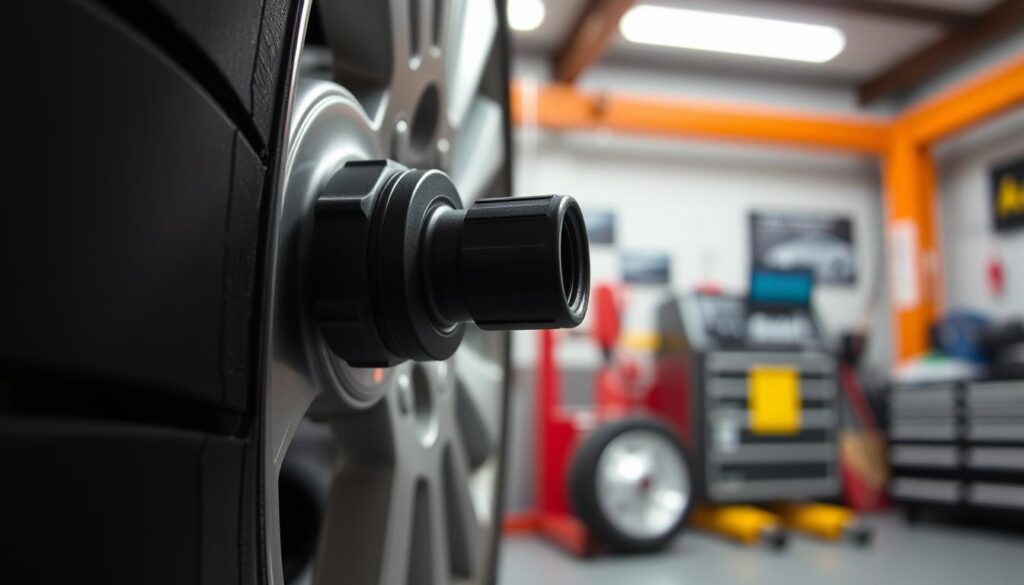
Keeping your tire pressure monitoring system (TPMS) in top shape is key for safety and performance. Regular service helps avoid unexpected breakdowns and keeps tire pressure readings accurate.
Proper servicing of the tire pressure monitor system includes several important steps:
- Sensor battery check every 3-5 years
- Annual professional TPMS inspection
- Recalibration after tire rotation or replacement
- Cleaning sensor valves during routine maintenance
Vehicle owners should watch for warning signs of TPMS issues. Unusual dashboard alerts or inconsistent pressure readings mean it’s time for service.
The recommended maintenance schedule for TPMS is:
- Quarterly visual sensor inspection
- Biannual complete system diagnostic
- Battery replacement when performance drops
- Sensor replacement every 5-7 years
Professional technicians can do detailed TPMS diagnostics. This keeps your vehicle’s tire monitoring system accurate and reliable. Regular maintenance prevents expensive repairs and keeps your vehicle safe.
Troubleshooting TPMS Issues: DIY Guide
Understanding TPMS service can be tough for many car owners. Tire Pressure Monitoring System (TPMS) problems can pop up without warning. This guide will walk you through common issues and when you can fix them yourself.
- Check tire pressure manually using a reliable gauge
- Inspect sensor valves for visible damage or corrosion
- Verify battery condition of TPMS sensors
- Reset TPMS system through vehicle’s dashboard menu
Basic Diagnostic Techniques
TPMS service is more than just checking pressure. You need to pay close attention to details. Use an OBD-II scanner to find specific error codes. These codes can show you exactly where the problem is.
| Diagnostic Step | Action Required | Difficulty Level |
|---|---|---|
| Sensor Voltage Check | Use multimeter to test sensor battery | Moderate |
| Signal Interference Test | Check for possible electromagnetic disruptions | Advanced |
| Physical Sensor Inspection | Look for physical damage or wear | Easy |
When to Seek Professional Help
While many TPMS problems can be fixed at home, some need a pro. If you see constant warning lights, have multiple sensor failures, or face complex electrical issues, get a certified mechanic.
- Repeated system error messages
- Sensor replacement needs
- Complex electrical diagnostics
- Warranty-related repairs
Remember, safety is always the top priority when working with TPMS service and diagnostics.
TPMS Battery Life and Replacement Timeline
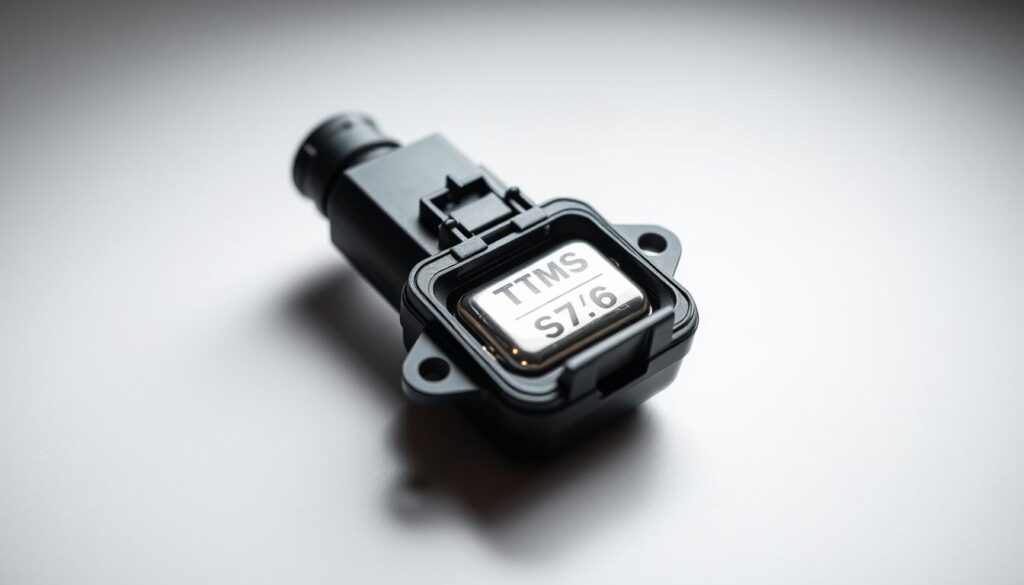
Keeping your vehicle safe and running well is key. The TPMS (Tire Pressure Monitoring System) sensors need special batteries that will need to be replaced. Knowing when to replace them helps keep your car in top shape.
Most TPMS sensor batteries last 5-7 years. But, how long they last depends on:
- How often you drive
- The weather where you live
- How you use your vehicle
- The quality of the sensor
It’s important to watch for signs that the battery is wearing out. Look out for inconsistent pressure readings, random dashboard alerts, and sensors that don’t work as well. Most car makers say to replace the batteries between 50,000 and 75,000 miles.
Replacing the batteries involves a few steps:
- Getting a professional to check the system
- Replacing the whole sensor unit
- Calibrating the TPMS system again
- Checking that everything works right
The cost to replace the sensors can be between $50 and $250 per wheel. This depends on your car’s make and model. Replacing them on time keeps you safe and makes sure your tires are always at the right pressure.
Cost Factors in TPMS Service and Repair
Knowing the cost of tire pressure monitoring system service is key for car owners. The price for TPMS upkeep can change a lot based on several important factors.
Prices for a full tire pressure monitoring system service can be from a little to a lot. Drivers need to get ready for different costs that affect their car’s tire safety and how well it runs.
Parts and Labor Expenses
TPMS service has several cost parts:
- Sensor replacement: $50-$250 per sensor
- Diagnostic testing: $20-$100
- System recalibration: $30-$150
The real meaning of TPMS service goes beyond just upkeep. It needs precise checks and special skills to make sure tire pressure is right.
Long-term Maintenance Costs
Regular TPMS upkeep can stop more costly fixes later. Not taking care of your tire pressure monitoring system might cause:
- More fuel use
- Sooner tire wear
- More safety risks
Proactive upkeep usually costs less than fixing things later. Car owners can save money by fixing TPMS problems early and sticking to the maker’s advice.
Things that can change TPMS service costs include the car’s make, model, sensor type, and local labor prices. Expert techs can give exact quotes based on what your car needs.
TPMS Sensor Calibration Procedures

Tire pressure sensor service needs precise calibration for accurate tire pressure monitoring. Understanding TPMS service shows how important calibration is for safety and performance.
Calibration is needed in several situations:
- After tire rotation
- Following sensor replacement
- When significant temperature changes occur
- After wheel alignment
Modern vehicles use two main calibration methods: stationary and drive-mode. Stationary calibration uses special tools to reset sensors while parked. Drive-mode calibration involves driving at certain speeds for sensors to recalibrate.
For accurate TPMS service, follow these steps:
- Check current tire pressure
- Inflate tires to manufacturer specs
- Use professional diagnostic tools
- Verify sensor communication
- Test system functionality
While some try DIY calibration, pros have the right tools for precise recalibration. Wrong calibration can cause safety issues by giving wrong pressure readings.
Technicians use special tools that talk directly to the car’s computer. This ensures accurate TPMS service and better tire pressure monitoring.
Legal Requirements and TPMS Regulations
Knowing the laws about Tire Pressure Monitoring Systems (TPMS) is key for car owners. TPM system service is not just about safety. It’s also about following the law. These rules help keep drivers safe by making sure tires are at the right pressure.
The TPMS definition is about a smart safety tech that’s now required by law. Laws set out how these systems must work and be kept up.
Federal Safety Standards
The TREAD Act of 2000 set important rules for TPMS. These rules say:
- All cars made after 2007 must have TPMS
- Systems must alert drivers about low tire pressure
- Car makers must make sure TPMS systems are reliable and last long
State-specific Requirements
While federal rules are a starting point, states can add their own rules:
| State Category | TPMS Inspection Requirements | Potential Penalties |
|---|---|---|
| Strict Enforcement States | Annual TPMS system check | Fines up to $500 |
| Moderate Enforcement States | Inspection during vehicle registration | Warning and repair requirement |
| Minimal Enforcement States | No mandatory TPMS inspection | No specific penalties |
Car owners need to know these rules to stay safe and legal. Keeping TPMS in good shape avoids legal trouble and keeps the car running well.
Benefits of Maintaining Your TPMS
Keeping your tire monitoring system in check is key for car owners. It’s not just about checking tire pressure. Regular TPMS upkeep brings many benefits that boost your car’s performance, safety, and driving experience.
Here are the main perks of regular tire monitoring system service:
- Enhanced vehicle safety through real-time pressure monitoring
- Improved fuel efficiency by maintaining optimal tire pressure
- Extended tire lifespan
- Reduced risk of unexpected tire-related breakdowns
Regular maintenance saves you money in the long run. It stops tires from wearing out too fast and keeps you from facing costly roadside issues.
| TPMS Maintenance Benefit | Potential Savings |
|---|---|
| Fuel Efficiency Improvement | Up to 3% reduction in fuel consumption |
| Tire Longevity | Extended tire life by 25-30% |
| Accident Prevention | Reduces tire-related accident risk by 50% |
There’s also an environmental win. Properly inflated tires cut down on carbon emissions, making your driving greener.
Investing in TPMS upkeep is wise. It keeps your car running smoothly, safely, and saves you money over time. Drivers who care for their TPMS enjoy a worry-free ride.
Professional vs. DIY TPMS Service
Choosing between DIY and professional TPMS service can be tough. Knowing when to do it yourself and when to get help is key. It keeps your vehicle safe and running well.
DIY tire pressure monitor system maintenance has its perks:
- Regular tire pressure checks
- Basic system reset procedures
- Visual sensor inspections
- Simple diagnostic scans
But, for more complex issues, you need a pro. Certified technicians have the skills for:
- Advanced sensor diagnostics
- Electronic system reprogramming
- Precise sensor replacements
- Comprehensive system calibration
Cost is a big factor in your decision. Amateur mistakes can lead to expensive repairs. Simple tasks can save money, but complex problems need a pro.
Before trying DIY, think about your skills, tools, and comfort. Getting a pro ensures your system is fixed right and avoids failures.
Conclusion
Knowing what a service tire monitor system means is more than just car care. The Tire Pressure Monitoring System (TPMS) is a key safety feature. It helps keep drivers safe from tire problems.
Getting your TPMS serviced has many benefits. It can prevent tire failures, save fuel, and cut down on car repairs. Keeping the sensors in good shape means your car runs better and safer.
Today’s cars need drivers to stay active. Adding TPMS checks to your car’s maintenance routine is smart. Experts say to get your system checked often to catch any issues early.
Having a good TPMS is a smart choice for your car’s safety and performance. Drivers who take care of their TPMS enjoy safer rides. They also avoid unexpected tire troubles and feel more secure on the road.
